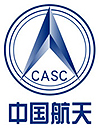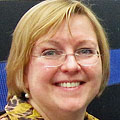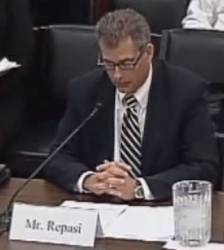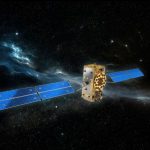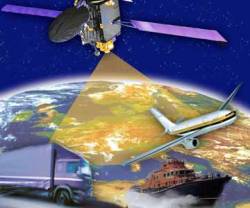 European Geostationary Navigation Overlay Service (EGNOS). ESA illustration
European Geostationary Navigation Overlay Service (EGNOS). ESA illustrationCiting European Space Agency (ESA) studies that showed “harmful interference” to Galileo receivers operating up to 1,000 kilometers from LightSquared base stations, a European Commission (EC) official has told the Federal Communications Commission (FCC) about his “deep concerns” about the wireless broadband company’s terrestrial transmissions in the 1525–1559 MHz band next to L1 GNSS frequencies.
Citing European Space Agency (ESA) studies that showed “harmful interference” to Galileo receivers operating up to 1,000 kilometers from LightSquared base stations, a European Commission (EC) official has told the Federal Communications Commission (FCC) about his “deep concerns” about the wireless broadband company’s terrestrial transmissions in the 1525–1559 MHz band next to L1 GNSS frequencies.
In a letter filed yesterday (July 19, 2011), Heinz Zourek, director-general for enterprise and industry, wrote to FCC Chairman Julius Genachowski that if LightSquared is allowed to begin broadcasting in the band, “What are now neighbour MSS [mobile satellite service space-to-Earth] transmissions at similar receive powers to RNSS [radionavigation satellite service such as GPS and Galileo] would in future be many orders of magnitude higher and with the potential to severely disrupt reception of RNSS signals.”
He cited analysis — including ESA studies —carried out in Europe that showed interference effects to Galileo equipment would occur from 100 meters to almost 1,000 kilometers (620 miles), “depending on the type of receiver being used.”
Zourek said, “This obviously presents a grave threat to the viability of providing a Galileo service covering US territory — a service which many studies have shown will not only benefit Galileo users, but those of GPS too as the two systems will be interoperable through a common signal design providing improved coverage and accuracy in urban environments.”
The EC official also expressed concern about “potential impacts to safety critical aviation applications,” including those provided by the European Geostationary Navigation Overlay Service (EGNOS) that is “equivalent and interoperable” with the Federal Aviation Admininstrations Wide Area Augmentation System (WAAS).
Zourek noted that Galileo would also contribute to the satellite-based search and rescue system MEOSAR, which includes a dedicated space-to-Earth link at 1544–1545 MHZ that acts as a return channel to distress beacons. He cited Article 4 of the International Telecommunication Union (ITU) radio regulations that “makes it clear that ITU Member States are expected not to cause harmful interference to systems of another country” that operate under ITU rules.
Zourek closed by asking that the FCC take into account the concerns about reception Galileo and EGNOS signals in the United States as well as those of GPS.
Earlier this month, another European group — the European Position, Navigation and Timing (PNT) Industry Council (EPIC) — expressed similar concerns in a July 4 letter from John Wilde, EPIC’s chief executive.
“There has been absolutely no warning of this whatsoever through the ITU, ICAO, UN Office for Outer Space Affairs, International GNSS Committee or other international bodies prior to the 2011 FCC order,” Wilde noted. “EPIC joins the other members of the global PNT community in urging the FCC to conduct independent technical interference analysis prior to granting a waiver to effectively allow a reallocation of spectrum use from mobile satellite space service to terrestrial wireless service that is adjacent to the band where GPS operates.”


